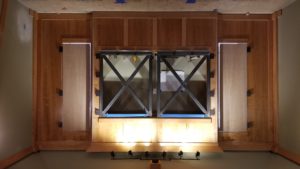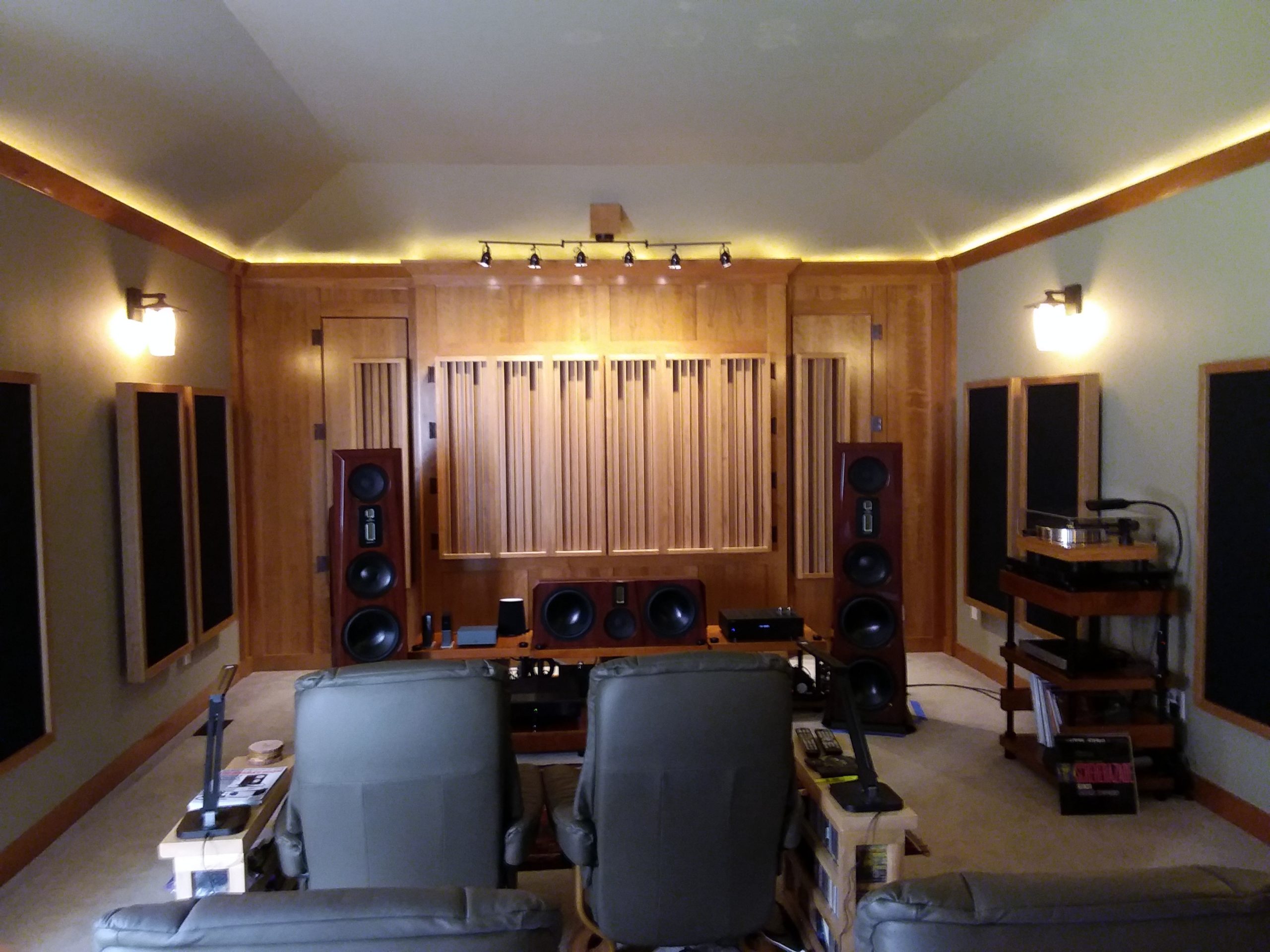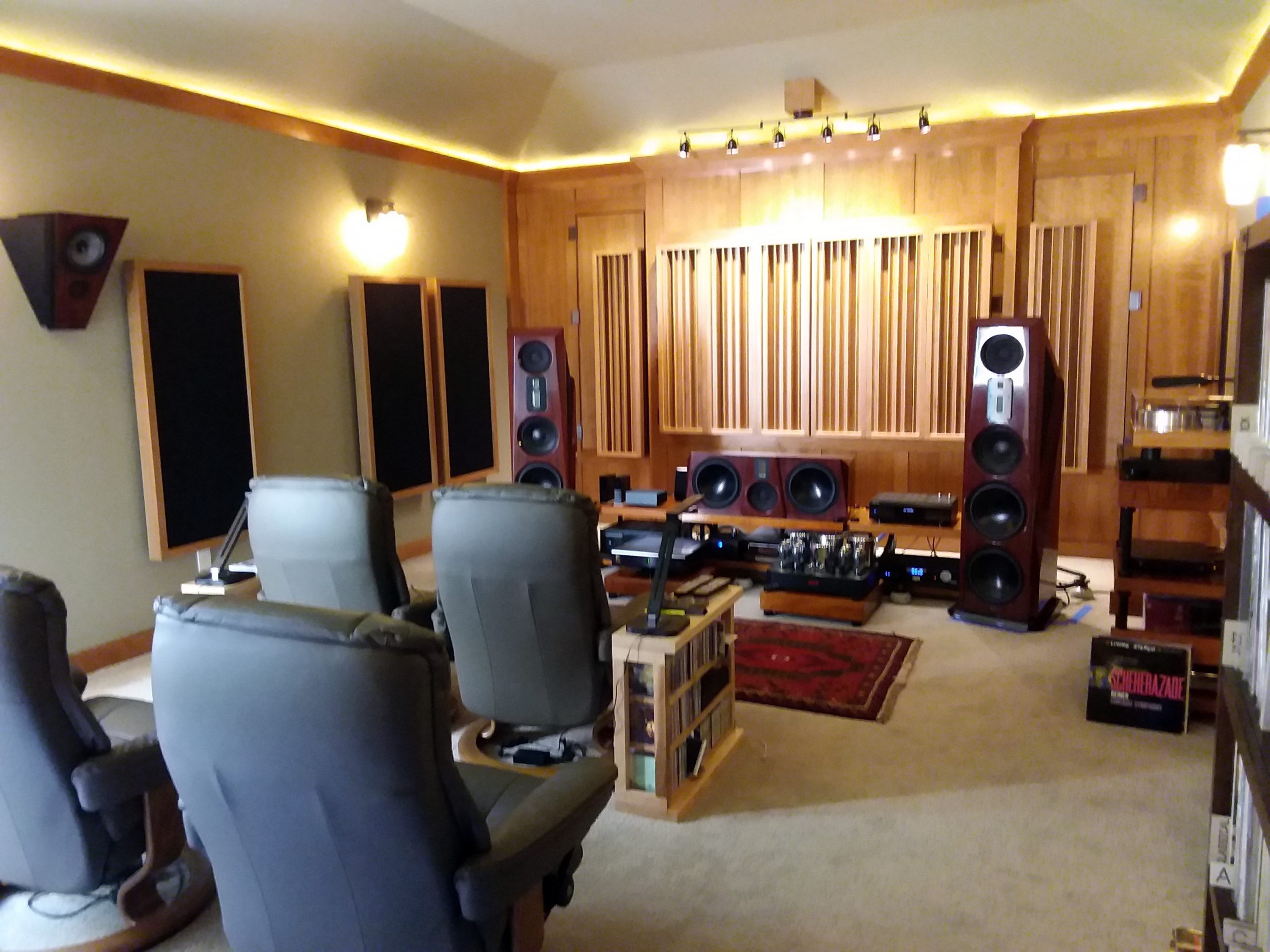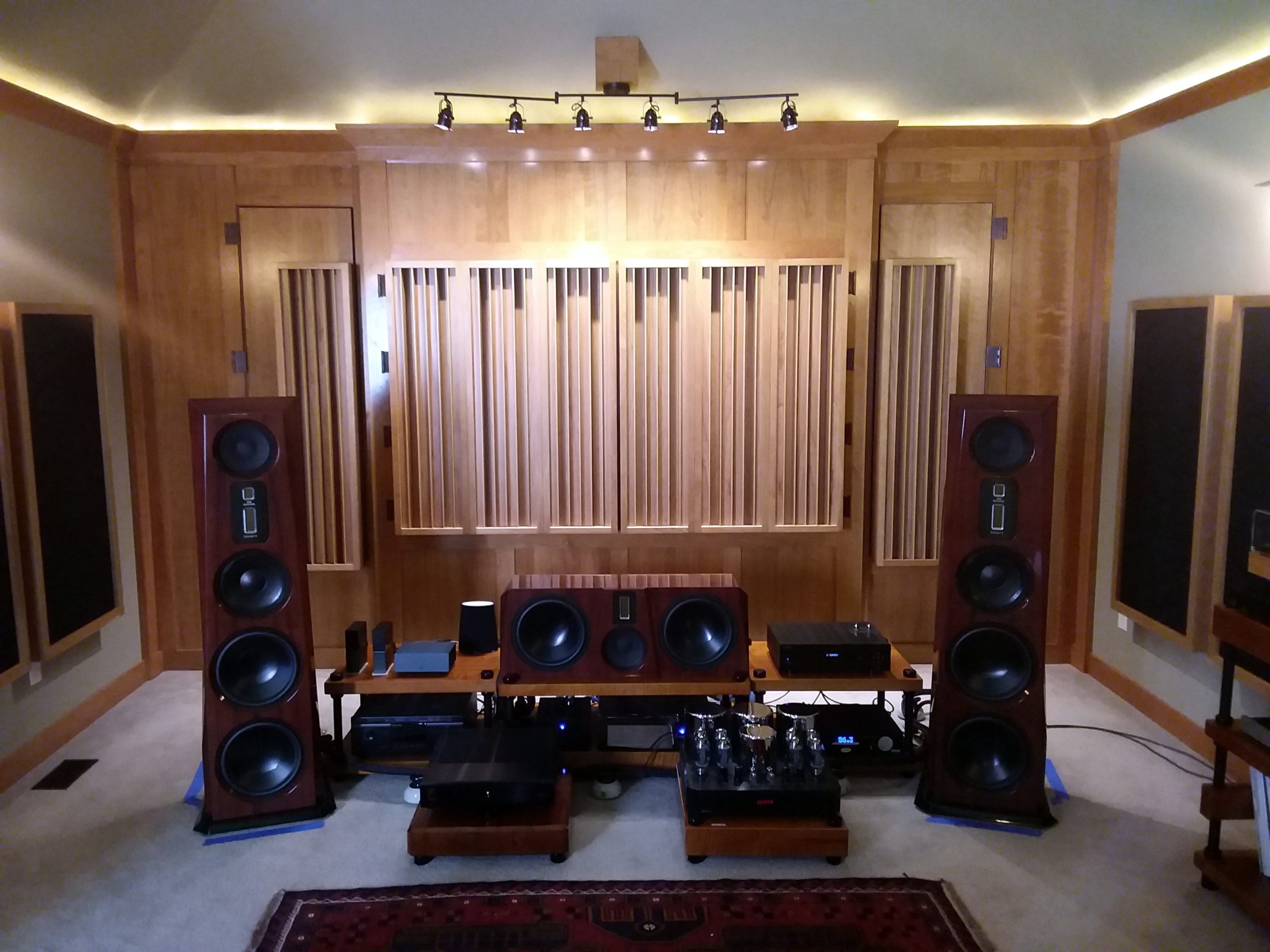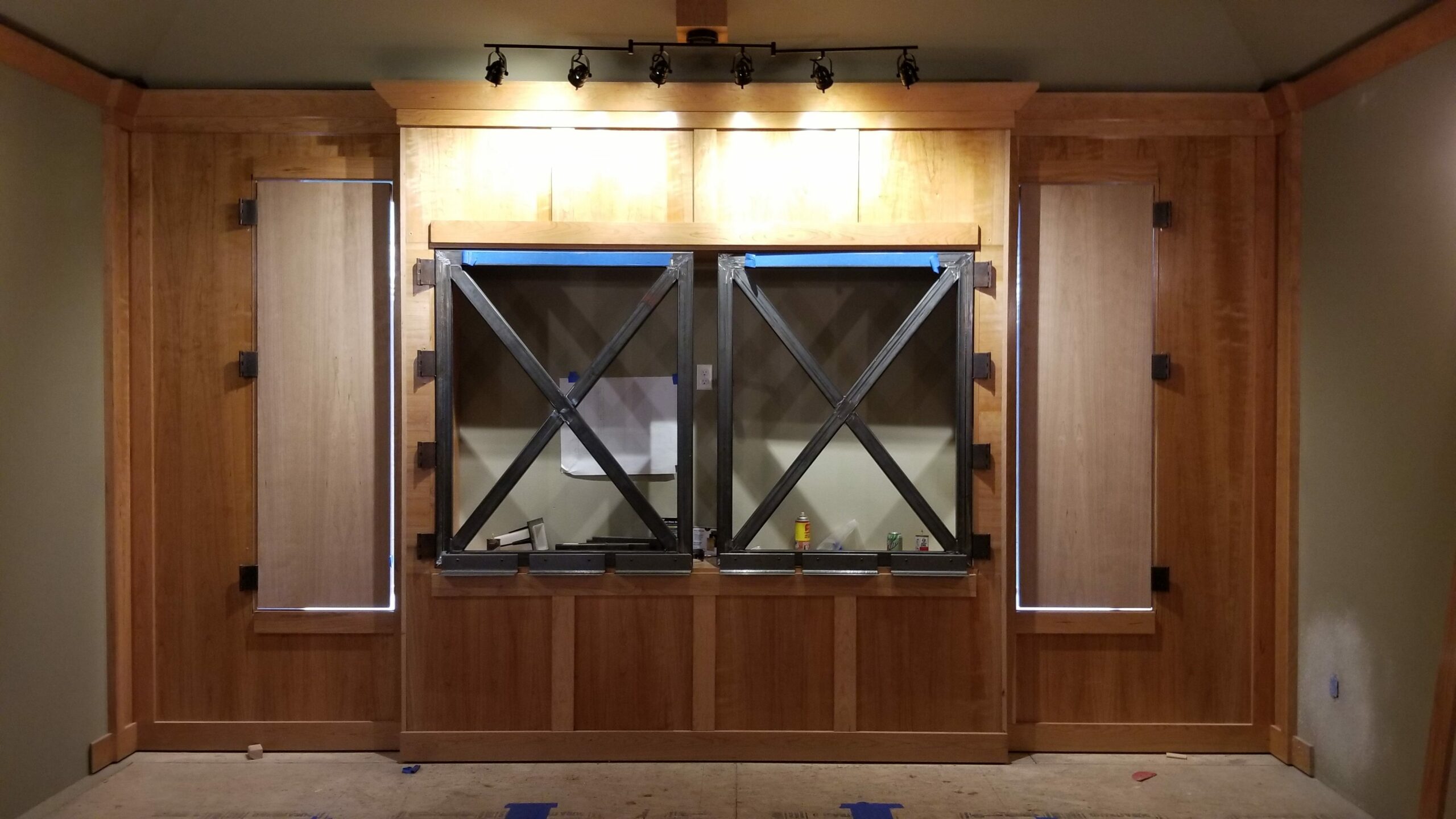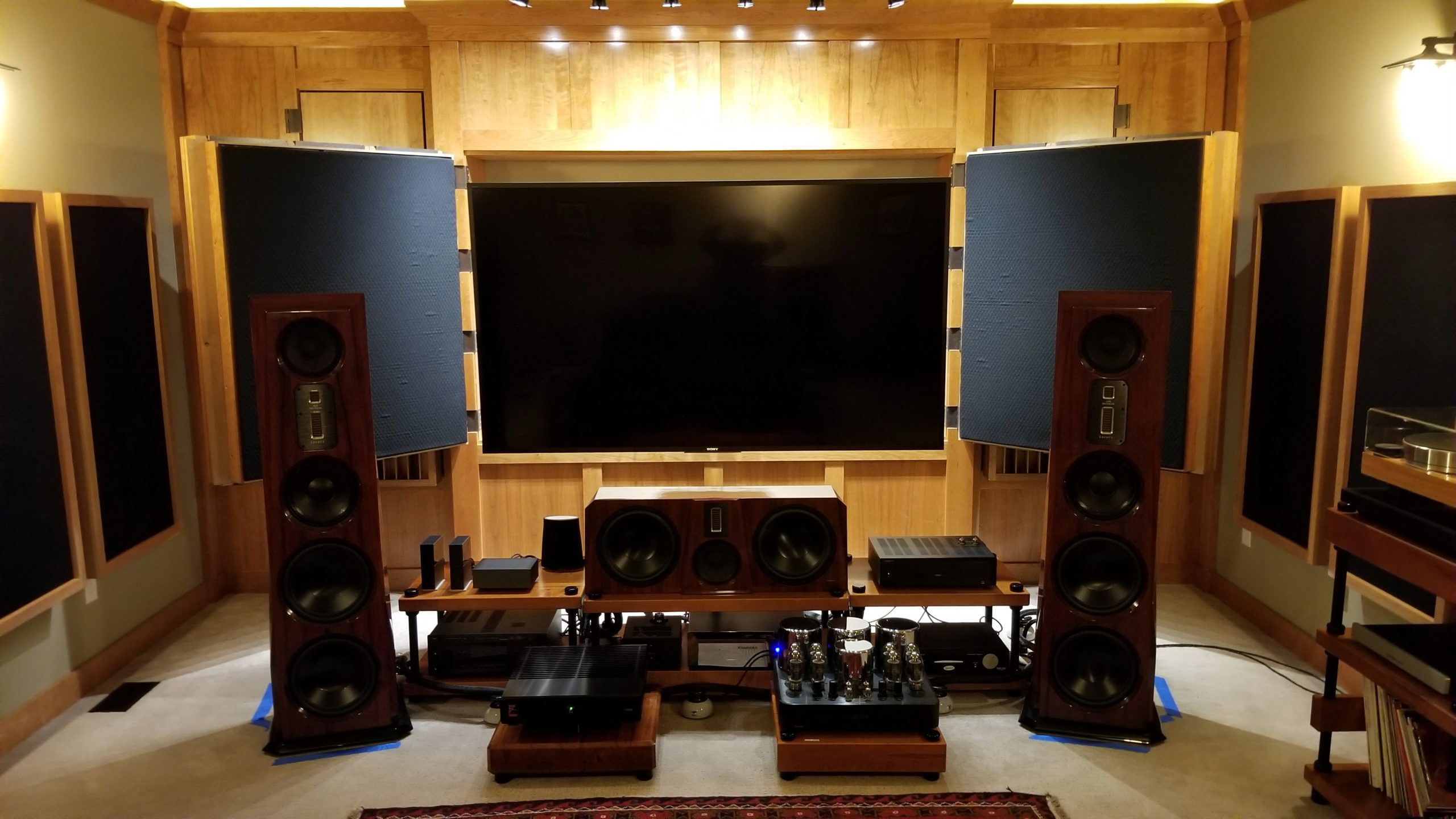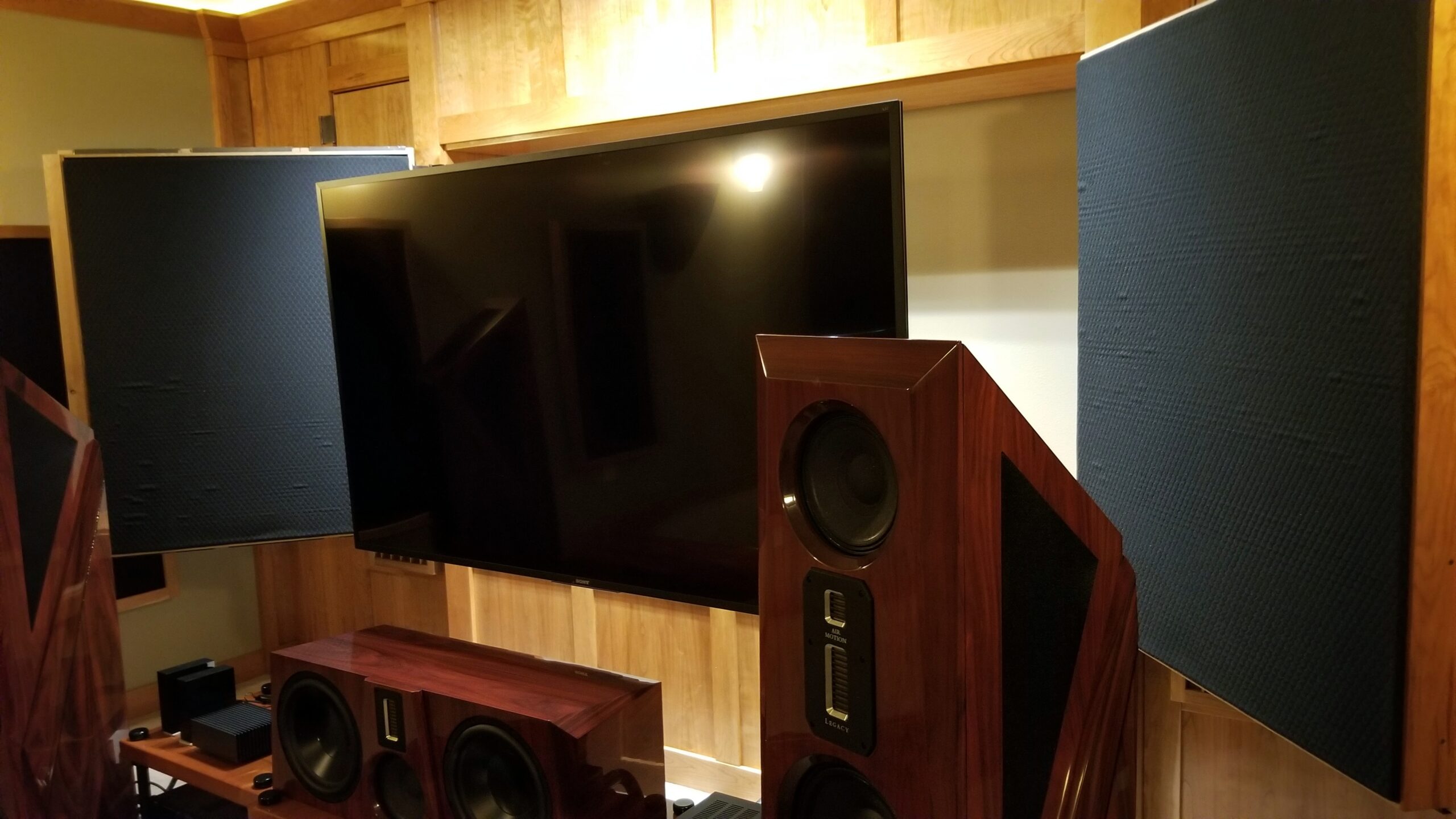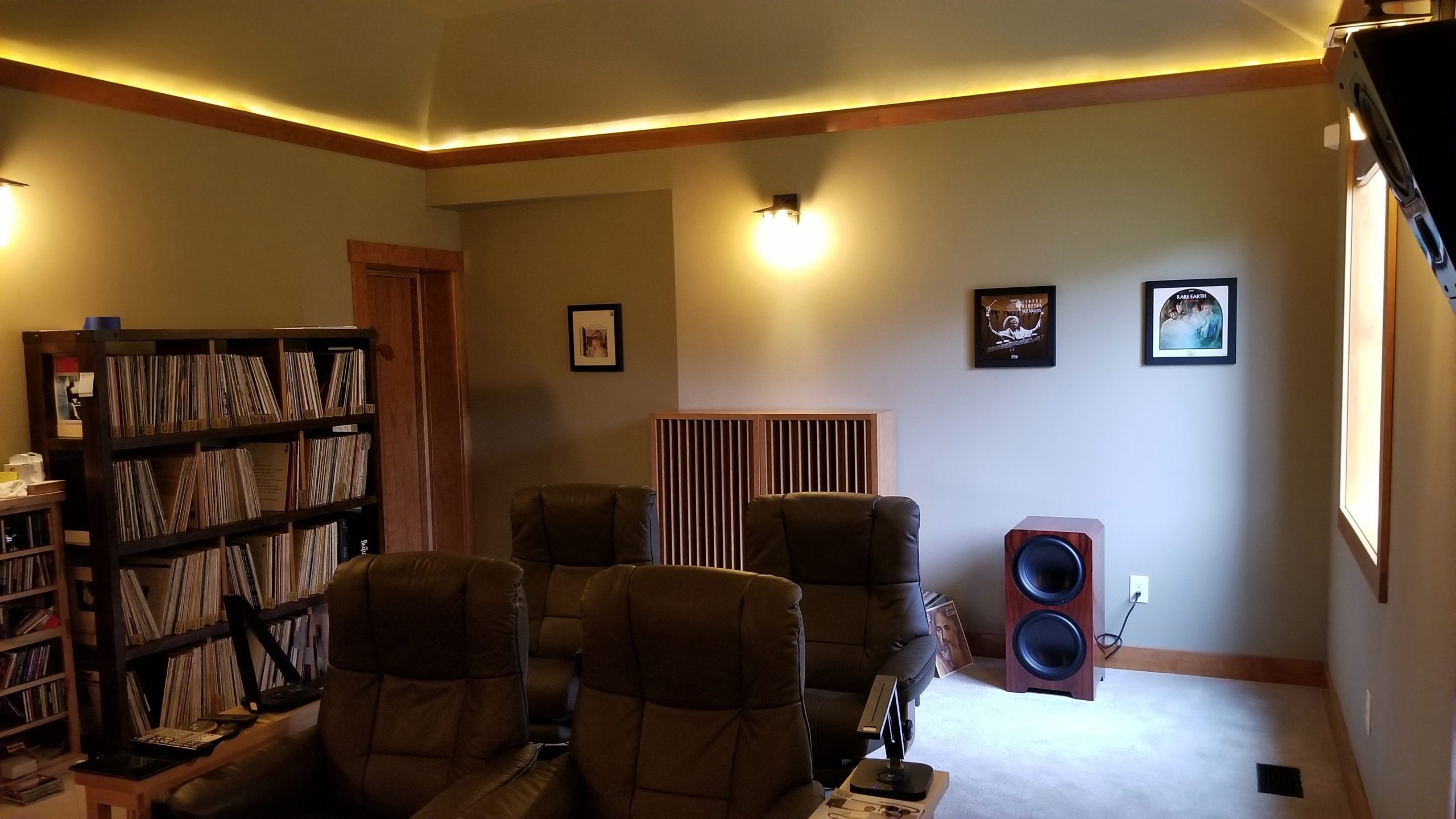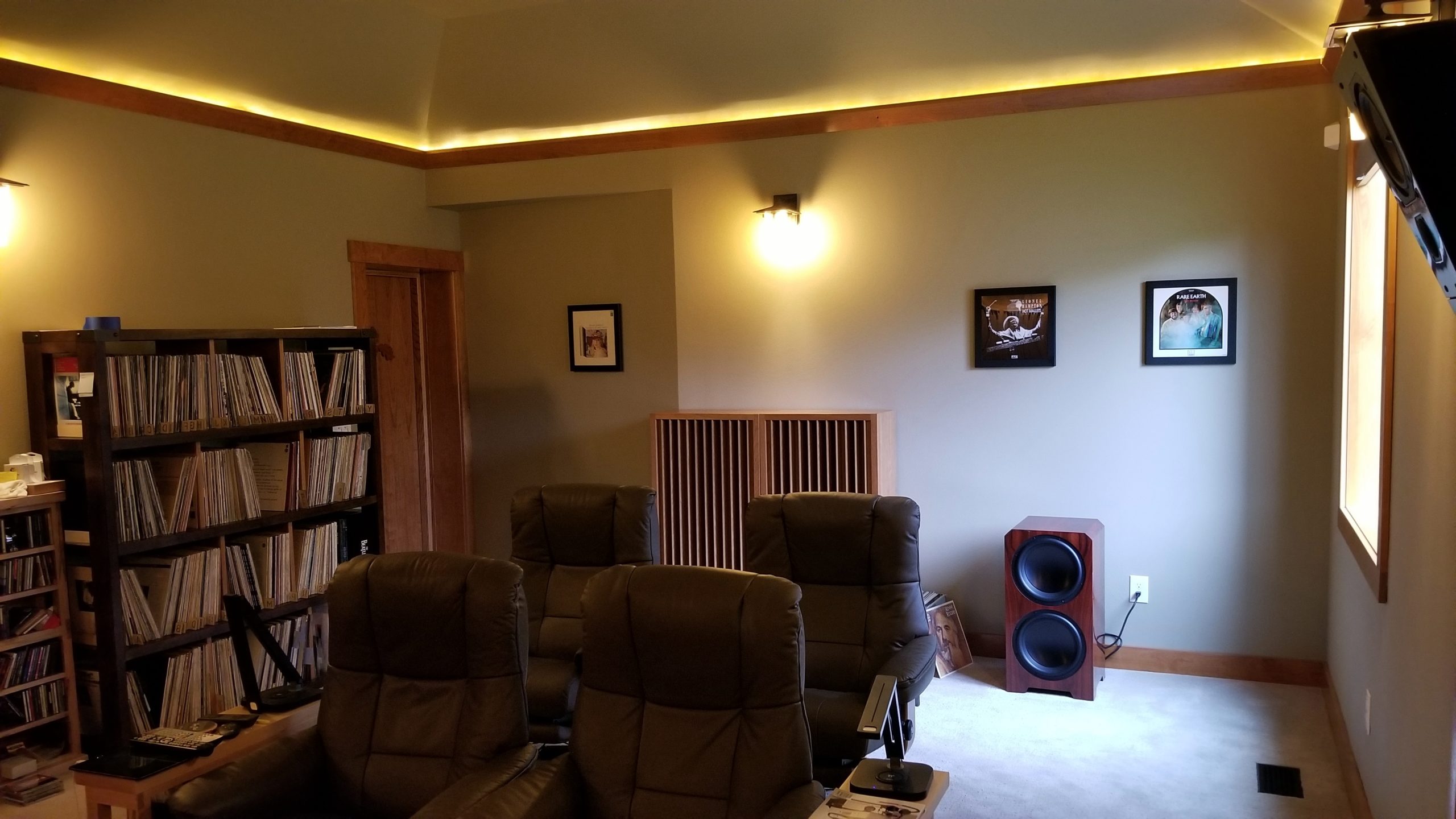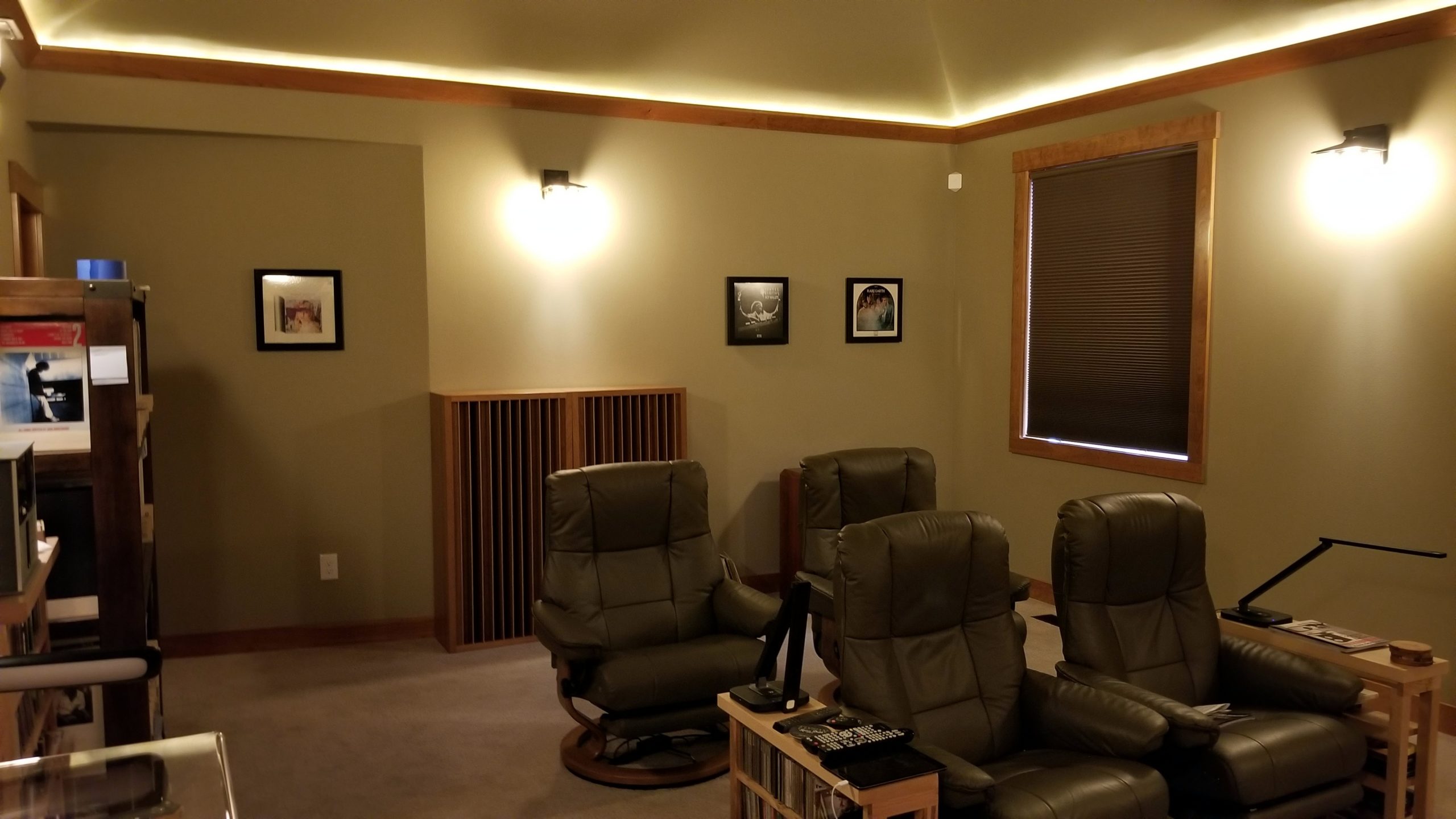Dual Usage Rooms
Home Theater Two Channel
[/cg_content_strip]
In this project, the customer had a dual usage room. They had a home theater and a personal listening room. The home theater required a large screen between the front channels. While this is a necessity for home theater applications, nothing could be worse for a two channel system. Having a large hard surface plastic screen between your speakers will produce spurious reflections that can not be managed correctly. Remember that sound quality is a direct result of the surfaces that it strikes.
The solution was a set of doors. On the outside of the doors were placed diffusers. On the inside of the screen doors, we placed our 2″ foam technology. When the client wants to listen to two channel, he simply keeps the doors closed which allows for diffusion to expand the sound stage and when he listens to home theater, he simply opens the doors to view the screen and the foam technology on the inside of the doors provides proper rates and levels of absorption for theater. Rear wall diffusion works for both home theater and two channel listening.
Our next issue is with the application of low-frequency technology. Fortunately, the room dimensions dictated that we had to treat both the front and rear wall to minimize unwanted, low-frequency, pressure issues no matter what the usage. We were able to build our carbon technology into both the front and rear walls to deal with low-frequency issues. This was accomplished using our CAW or Carbon Absorbing Wall technology. You can read more about this process using the following link: Acoustic Fields Carbon Absorber Wall
Sidewall reflection management is the same for both a small home theater and listening room. The sidewall reflections were managed with a series of our proprietary foam panels hung across each surface area. For a two-channel listening room, the time signature of all sidewall reflections must be managed with the correct rate and level of absorption. There must be a balance between the direct energy (straight line) from the speakers to the listening position and the reflections from the side walls.
LATEST PROJECTS
